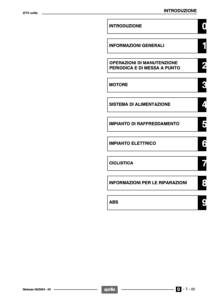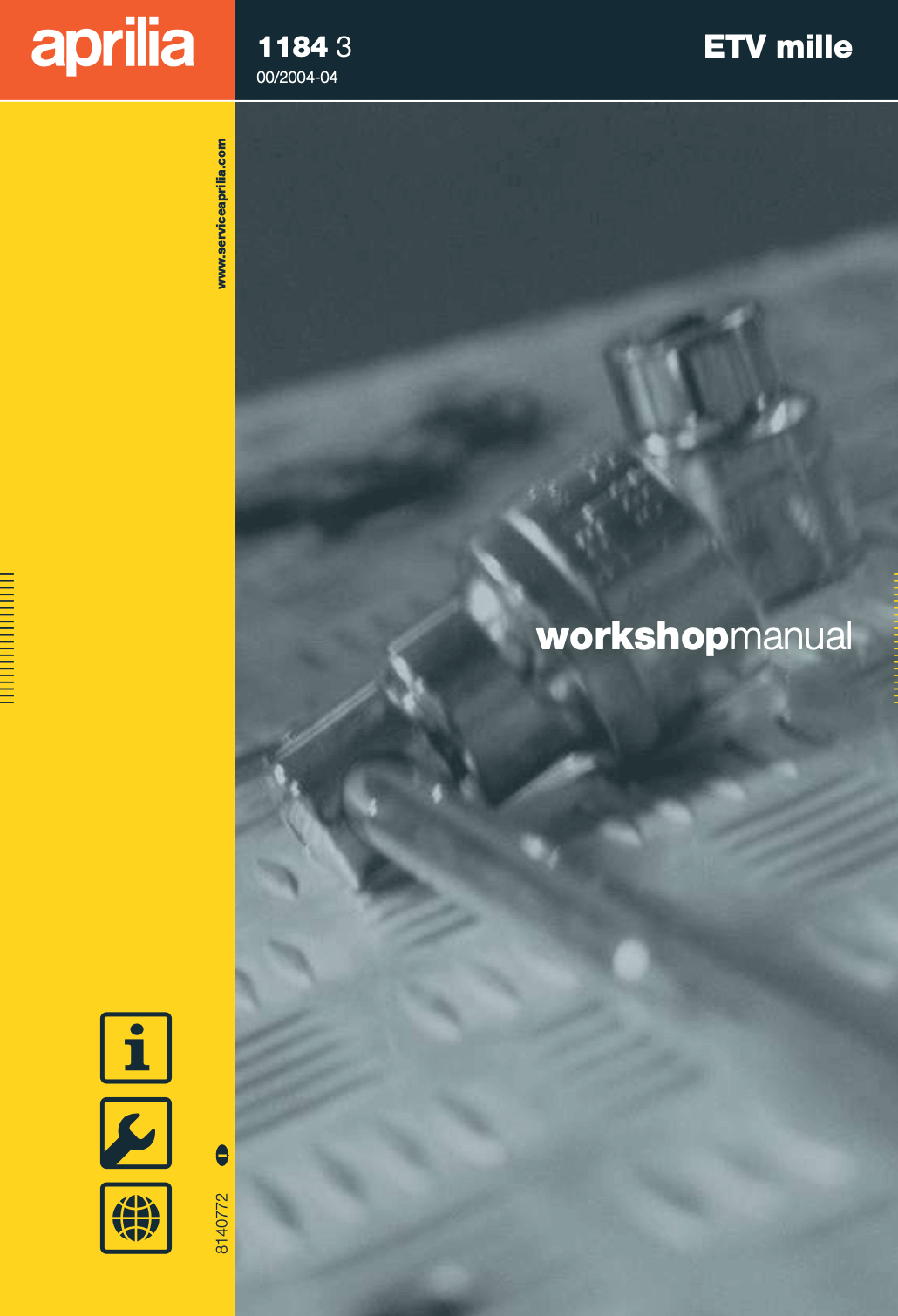Complete PDF version of the Service Manual for the Aprilia ETV 1000 Caponord. A MUST for every Caponord owner.
Download: Immediately after payment!
OEM Original factory workshop manual.
Models covered by this manual: 2004 to 2012
Number of pages: 352 pages
Table of contents:

This PDF repair manual can be downloaded right after the payment process in complete, on the device of your choice.
We do not offer printed manuals, for the following reasons:
- it is more eco-friendly to use a digital version
- your manual never gets dirty or greasy
- you can always choose to print the specific page(s) you need to work on your bike
- you receive your manual immediately after payment
- it is searchable

Aprilia ETV 1000 Caponord
The Aprilia ETV 1000 Caponord is a motorcycle street enduro motorcycle Italian Aprilia from 2001 to 2012.
The second generation of the ETV sees the debut with the adjoining restyling only in 2004 ; at first sight the modification of the front part is evident, the direction indicators integrated in the fairing give space to new arrows with teardrop profile with transparent glass.
Some internal components also change, first of all the 998cc Rotax V60 mapping becomes more usable and compliant towards lower rpm despite the intrinsic architecture of the Austrian engine cannot compromise too many. The voltage regulator, on the other hand, was partially revised. After that in the first versions it was found a wiring with a too small caliber, the new version presents a wiring of higher resistance, which unfortunately, alone, however, has not completely produced the desired effects.
The regulator of 1st equipment in fact, on both versions, has always proved to be an element of poor reliability, so much so that most of the users of these bikes have in any case opted for the adoption of an aftermarket component (Shindegen) equipped with technology more modern mosfet and certainly more suitable to avoid headaches on a vehicle born with the aim of grinding kilometers.
Different between the two versions also some details such as the protections on the sides of the silencers, first black now in natural satin finish aluminum and the shape of the central stand (always offered as an option) which in the first series tended to touch the ground in the most extreme folds.
The frame is also slightly retouched in the ABS version, with the addition of minimal but decisive reinforcement ribs in the footpeg area.
The front structure remains the same, forks 50 mm Marzocchi , but the springs are replaced with others of a progressive type. In this case too, the rear monoshock remains the Sachs to which the preload adjustment system is redesigned, while maintaining the progressive effect of the suspension. A removable rubber insulating sheath is added under the rider seat to avoid excessive heating of the saddle, especially in summer and during long stops at traffic lights in urban driving.
Also eliminated, compared to the 1st series, the two small air deflectors placed on the sides of the windshield.
Since 2004 , the bike is marketed with a standard ABS system , which can be deactivated using a button on the right side of the dashboard. It is the result of the collaboration between Brembo and Bosch and characterized by double sensors, which simultaneously read the rotation of both wheels: in the case of locking of one of the wheels due to loss of grip, the ABS pump / control unit (located in front of the shock absorber and with split and independent circuits) can intervene by modulating the pressure in a differentiated manner on the two wheels. The brake department consists of two 300 mm discs at the front (semi-floating in the ABS version of the bike only) and a single 280 mm disc at the rear (also semi-floating in the ABS version of the bike). In the latter case, the braking system includes metal braided hoses, while in the 1st series the hoses are more traditional (but in any case advertised by the manufacturer as being of superior quality). The ABS system can in any case be deactivated when driving on rough terrain such as gravel, sand and mud, where the control of the motorcycle and its stopping would be compromised by the intervention of the anti-lock system.
Furthermore, this second generation is Euro II approved.
Source: Wikipedia

